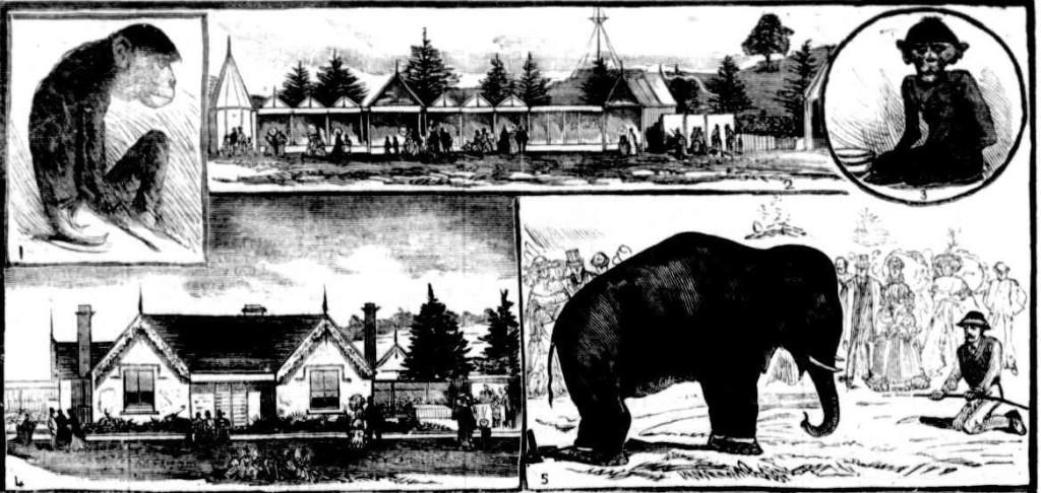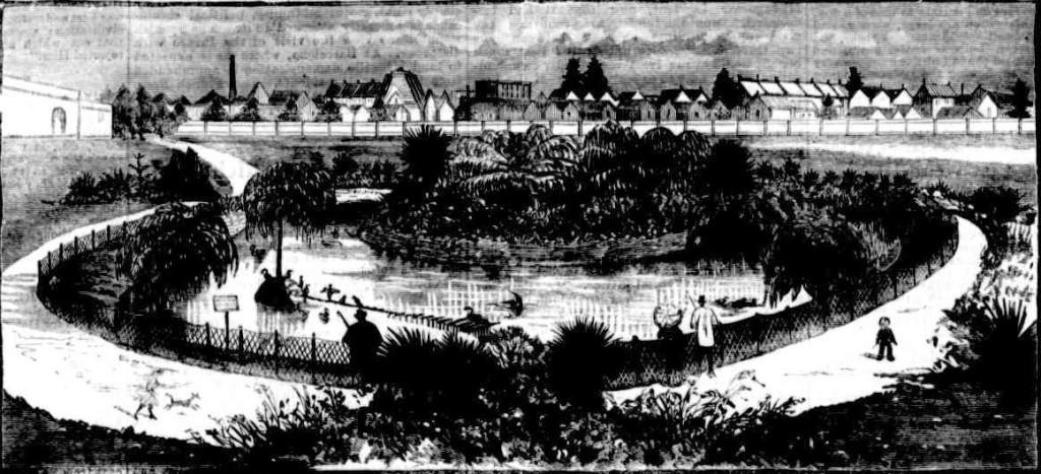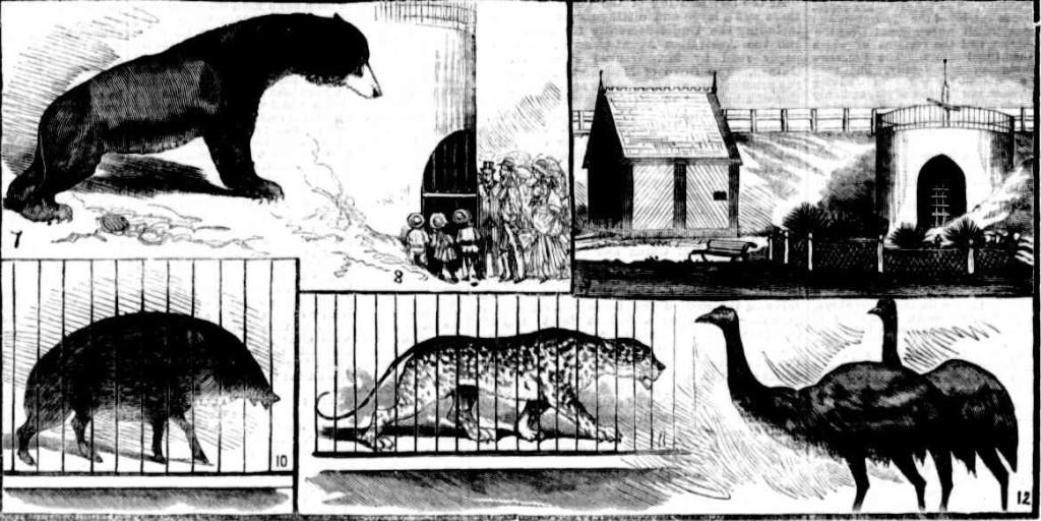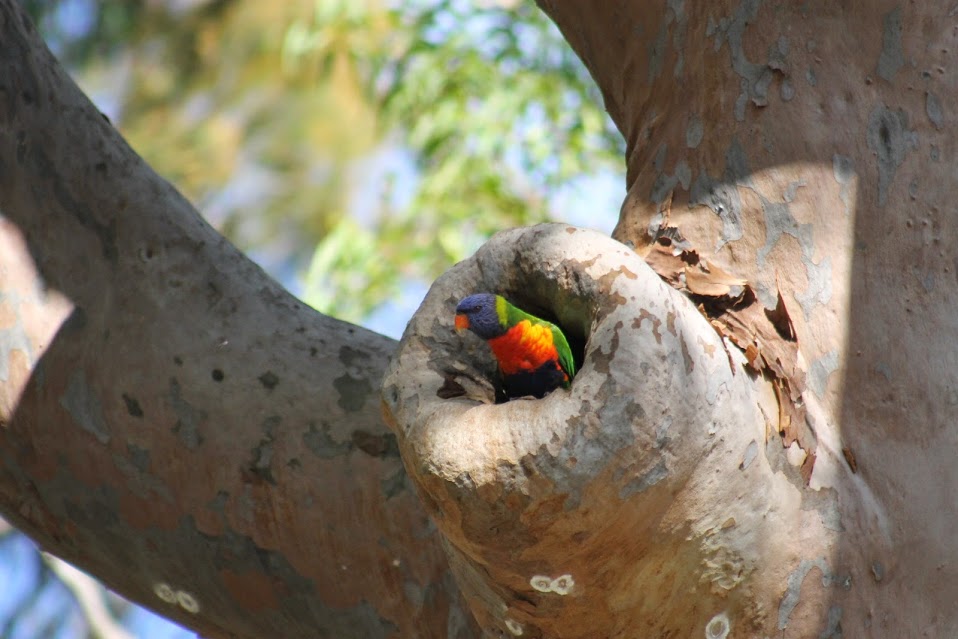National Bird Week 2015, the Aussie Back Yard Bird Count: and Australia's First Bird Counts - a 115 Year Legacy
National Bird Week 2015 will take place between Monday 19 October and Sunday 25 October. The celebration of National Bird Week has its origins back in the early 1900s when the first 'bird days' were promoted by Birdlife Australia’s predecessor, the Royal Australasian Ornithologists Union. Other states joined in too and this was a movement that began in our schools:
BIRD PROTECTION SOCIETY.
The annual committee meeting of the Adelaide Branch of the Society for the Protection of Birds was held at the Y.W.C.A. Rooms on Friday morning… the chair. The Secretary, Mrs. John K. Playford, reported having received a letter from the Chairman of the Board of Inspectors in reference to the suggestion for a 'Bird Day' in public schools, asking for information upon the subject. She had furnished the methods laid down by the United States Government in connection with its annual Bird Day, which had become so popular. The figures supplied by Mrs. Playford showed 126 new members had enrolled since the last annual meeting, and 73 of them had been entered as associate members.— It was resolved that lectures be arranged in connection with city and suburban schools. Mrs. Playford reported having obtained a number of slides from London illustrative of birds and bird life, and it was resolved that more should be purchased. BIRD PROTECTION SOCIETY. (1900, September 29). South Australian Register (Adelaide, SA : 1839 - 1900), p. 8. Retrieved from http://nla.gov.au/nla.news-article54532505
BIRD DAY.
The Director of Education said to-day that the suggestion that there be an annual school bird day will probably be adopted by the Department. BIRD DAY. (1908, October 30). Penshurst Free Press (Vic. : 1901 - 1918), p. 2. Retrieved from http://nla.gov.au/nla.news-article166154319
BIRD DAY.
The celebration of the first Bird day on the 29th ult. proved a complete success. It was not a school holiday, for Work proceeded as usual in the morning. In the afternoon in country districts, after carrying out the specified programme of songs, recitations and short addresses, excursions were undertaken to visit nests previously marked down by the pupils. Greater interest was shown in observing the behavior of the young birds and their parents than previously when the eggs were taken and the nests destroyed. A list was made of the birds seen, and will be handed over to scientists for tabulation. In the city, where excursions .ware not so easily managed, the leading members of the Australasian Ornithologists' Union, the Bird Observers' Club and other bird lovers visited two city schools each, and addressed the senior pupils on Bird Life. In each case the visitors report an enthusiastic audience, and one well prepared to receive their addresses, for the pupils had studied the articles in the special bird day school papers, which were contributed by the ornithologists of Victoria. In some cases proud owners bore their pets— cockatoos, parrots, magpies, finches, butcher birds, laughing jackasses, honey eaters and even domestic fowls— to school to provide material for lessons. Amongst those who visited the schools were Mrs. A. D. Hardy, Miss Fenton, Drs. Home and Bryant, and Messrs. A. J. Campbell, president A.O.U.; D. le Souef, ex-president A.O.U.; G. A. Keartland, ex-president Field Naturalists' Club; Donald Macdonald, A. H. E. Mattingley, late secretary A.O.U.; C. L. Barrett, secretary B.O.C.; E. B. Nicholls, A.D. Hardy, F. G. A. Barnard, secretary F.N.C.; H. W. 'Wilson, secretary A.O.U.;F. Howe. 0. F. Cole, H. J. Coles, G. B. Fritehard, A. James, J. A. Leach and E.H. Townsend. Messrs. C. French, G. French, jun., and J. A. Kerala who also rendered good assistance at the museums. BIRD DAY. (1909, November 6). Leader (Melbourne, Vic. : 1862 - 1918), p. 49. Retrieved from http://nla.gov.au/nla.news-article197076941
In other states:
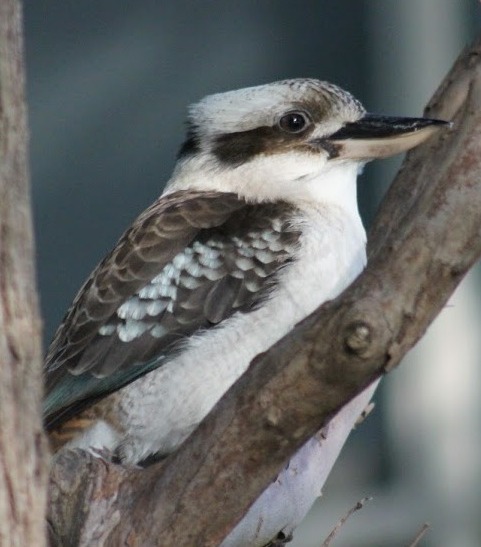 BIRD DAY. FIRST CELEBRATION TO-MORROW. OBJECTS OF THE MOVEMENT.
BIRD DAY. FIRST CELEBRATION TO-MORROW. OBJECTS OF THE MOVEMENT.Tomorrow Bird Day will be celebrated for the first time in Now South Wales, but hence-forth it will be an annual fixture, and will be observed on the second Wednesday in each October.
Ten year's ago if you had asked for information about Australian birds not one person in fifty could have answered you, perhaps not one in a hundred amongst city people. In the bush, where there is more time for the softer, Inner Joys of life, many a man could give you a name for the bigger and more conspicuous birds, and could tell you tales of their habits, which, if you were a townie, yon would probably receive with an Incredulous smile. Here and there you would find an ornithologist taking a scientific interest in the bird specimens, who could reel you off yards of Latin names' that would shock your next question Into silence. ' And, at rare Intervals, you would find a true nature-lover, to whom the birds meant more than mere bundles of feathers, or scientific specimens, and "for whom the smallest wren or tit had as great a fascination as the brolga or the lyre-bird.
But the last decade has seen a wonderful change in the attitude towards birds and wildlife, generally. Those few true nature-lovers have proved the little leaven which has worked Its way right through the stolid mass, and eyes and ears once shut so tight, are learning to see and hear the things around them. The man In the street has lifted his eyes from the dusty pavement to see the swallows skimming overhead; people have ceased pining for the Bong of the nightingale and-skylark, and have begun to listen to the voice of the reed-warbler, the grey thrush, and the butcher-bird. Australians have at last awakened to the fact that all that is lovely and desirable does not belong to the old world, but that their own land is filled with beauty and things worth knowing.
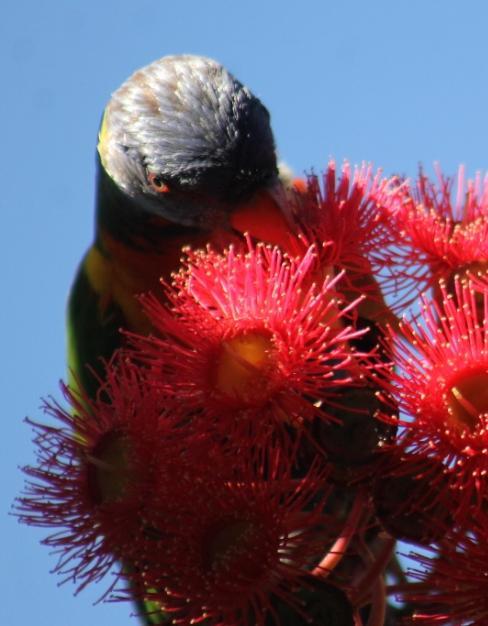
The reaction has been wonderful, and to those who have watched it coming, enthralling. The native flowers sold In the street heralded its approach; the bush trees and shrubs finding their way Into gardens told of the coming change; the publication of "bush" books told of the awakening spirit, and the weekly photographs and "nature" articles In the newspapers put It beyond doubt. But perhaps the strongest proof of all of this great national awakening Is the part "nature study" is taking In the teaching of the young. Australian children now sing songs about wattle and boronia, Jacky Winters, and blue wrens, where once they sung of cowslips and primroses, nightingales, and goldfinches. And, best of all, the children today are learning not only to know but to love and protect
their own wild birds.
The first step In this direction, was the formation In Sydney, a couple of years ago, of the Wild Life Preservation Society, the members of which pledged themselves to do all In their power to protect the wild creatures, and to spread knowledge of them. Following close on this society came the Victorian Gould League, followed by the Tasmanian and South Australian leagues, and some months later the New South Wales Gould League of Bird Lovers was formed, with the following aims:
(a) To protect all birds, except those that are noxious.
(b) To prevent the unnecessary collection of wild birds eggs.
(c) To disseminate knowledge regarding our birds, and to help members, teachers, and others to identify them.
(d) To secure the general use of one common name for each bird.
(o) To cultivate a more friendly attitude towards birds, by fostering an intelligent interest in them and their habits
(f) To encourage the formation of bird sanctuaries.
The Gould League, as It is now familiarly known, was formed in New South Wales in the State schools, and, under the active approval of the department, and, although, the members will Include many outsiders as well, the chief sphere of activity has been amongst the State school children. The movement appealed at once to the Imagination of both teachers and scholars, and "local leagues" were quickly formed In different parts of the State. Each centre has complete freedom to work out Its own scheme, but all keep In touch with the central body. There are now local leagues in nearly every school, and It is expected that more will be formed tomorrow.
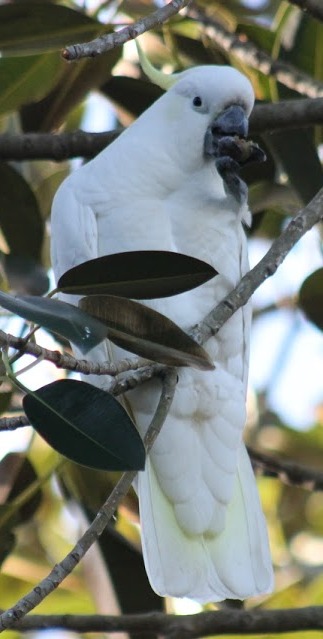 Although different methods of bird study have been adopted In different districts, there is one point upon which all members are agreed, and that Is the celebration of "Bird Day." There had been but one feeling about the matter-one of general enthusiasm; and the feeling has spread far beyond tho bounds of the Gould League itself. Bird Day has appealed to the general public, and magazines and newspapers have given It a great impetus by special articles and photographs.
Although different methods of bird study have been adopted In different districts, there is one point upon which all members are agreed, and that Is the celebration of "Bird Day." There had been but one feeling about the matter-one of general enthusiasm; and the feeling has spread far beyond tho bounds of the Gould League itself. Bird Day has appealed to the general public, and magazines and newspapers have given It a great impetus by special articles and photographs.
But though the movement has won the public interest, Bird Day will naturally be most observed in the schools. The "Public Instruction Gazette" has published a special "Bird Day" supplement, giving a number of Interesting articles and pictures dealing with birdlife, and also a list of "suggestions for Bird Day," which will be carried out In the schools. During the week the nature study work will be the observation of birds, and from the kindergarten to the highest class birds will figure in the lessons. Tomorrow special songs will be sung, bird poetry will be recited, any children who can imitate bird calls will be asked to do so, and, where possible, excursions will be made to the bush to study the birds at home.
The council of the Gould League has Issued invitations for tomorrow night, when the inaugural celebration of Bird Day will beheld at the Turner Hall, Technical College. The Minister for Education will preside, and an Interesting programme has been arranged, consisting of songs by kindergarten children, older scholars, and students from the Training College, and a lantern lecture " by Mr. Lancelot Harrison. BIRD DAY. (1911, October 10). The Sydney Morning Herald(NSW : 1842 - 1954), p. 7. Retrieved from http://nla.gov.au/nla.news-article15280329
ARBOR AND BIRD DAY.
Arbor and bird day was observed at the Thebarton State School on Friday. The Chairman of the Board of Advice (Mr. J.F. Mellor) addressed the children on the benefits derivable from protecting the native birds, which were of use to mankind in clearing garden pests. He said a French scientist had stated that if the insectivorous birds were all destroyed, animals as well as human beings would not be able to live. The teachers spoke to the children on the subject. The upper classes were taken into the playground and standard roses, fruit trees, and climbing plants supplied by Dr. Holtze were put in under Mr. Donnell's direction. Mr. A. G. Edquist, of the Adelaide High School, addressed the young folk and took photos, for reproduction in The Children's Hour. ARBOR AND BIRD DAY. (1912, August 24). The Register(Adelaide, SA : 1901 - 1929), p. 14. Retrieved from http://nla.gov.au/nla.news-article59230398
What preceded this was the forming of different societies for the observation and protection of our birds as many of these were hunted by small boys as sport or as farmers who perceived damage to crops or stock by birds meant they could 'get rid of them' - an attitude that still, unfortunately, prevails today to the point where some of these species are now listed as endangered. The names of the people who spoke at the first Bird Day in Victoria are also among those who began the Royal Australasian Ornithologists Union, and among their first members are gentlemen who began many of Australia's earliest zoos:
AUSTRALIAN ORNITHOLOGICAL UNION.
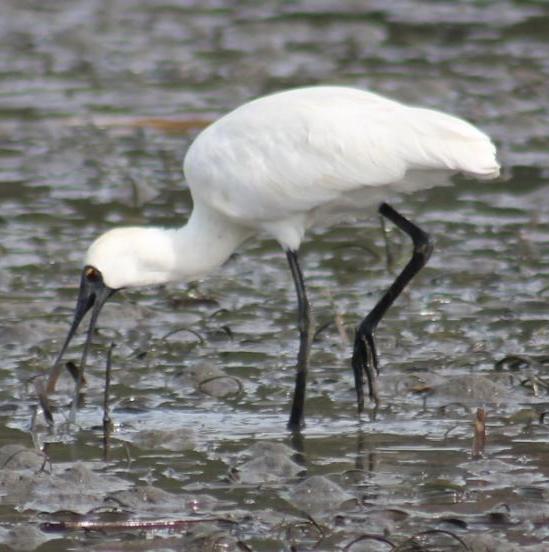 A large and representative meeting of those interested in ornithology assembled at Miss Kissock's rooms, Collins street, Melbourne, on Wednesday evening, November 7, the occasion of a return complimentary dinner to Mr. Dudley Le Souef, assistant director of the Zoological gardens of Melbourne.
A large and representative meeting of those interested in ornithology assembled at Miss Kissock's rooms, Collins street, Melbourne, on Wednesday evening, November 7, the occasion of a return complimentary dinner to Mr. Dudley Le Souef, assistant director of the Zoological gardens of Melbourne.
Doctor C. S. Ryan presided, and welcomed the intercolonial visitors. He said it had been thought advisable to form an Australian Ornithological Union. The Rev. Walter Fielder, in proposing the health of Mr. Le Souef, mentioned his many sterling qualities and great enthusiasm as a scientific collector, and on behalf of the ornithologists at Australia presented him with a small memento in the shape of a pamphlet containing the autographs of many prominent ornithologists in the colonies. Mr. Le Souef suitably responded.
Mr. A. J. Campbell, FLS., proposed: — 'That on Australian ornithological union be formed.' He read the history of the Starting of the American union, which was founded in 1883 by the joining together of 21 enthusiastic supporters of ornithology. It had grown to large proportions and great importance not only in disseminating knowledge from a humanitarian standpoint, but it had proved invaluable in advising the Government upon laws for the better protection of useful birds, laws which had been of untold commercial wealth to the States.
Mr. J.W. Mellor, secretary and representative of the South Australian ornithological association, who supported the motion, gave a brief outline of the history of the Adelaide association, the pioneer association in Australia. It was advisable to have separate bodies in each of the colonies to gain Knowledge in their respective locations, but the union should meet periodically in the various capitals to discuss ornithological subjects, and disseminate the knowledge gained by the individual bodies. Mr. Robert Hall wished the scheme success, but hoped that the formation of ornithological associations in the various colonies would not interfere with natural history bodies of a multifarious nature already in existence. Mr. G. A. Keartland thought that perhaps the societies would not be numerical strong enough to combine. The field naturalists' societies of the colonies should combine, and have all branches of natural history in the union. The continent of Australia had been only half worked with regard to ornithology. We were asleep while other countries were sending out men and doing scientific work which we should be doing, to the honour, glory, and lasting usefulness of our country. Mr. Le Souef was in full sympathy with the formation of the union, he read the rules and regulations of the British ornithological union, of which he was a member. The motion was carried.
It was resolved that the following become a committee to draw up rules and regulations for the proposed union, and report at a future meeting:—Dr. C. S. Ryan, Messrs. A. J. Campbell, KLS., K. Hall, G. A. Keartland. J. .Gabriel, and Dudley Le Souef, OM.Z.S. It was thought probable that the first meeting of the union would be arranged to take place in Adelaide early in the 20th century. After the general business of the meeting had terminated Mr. Le Souef entertained those present with some splendid views of bird life, and by the aid of the magic lantern took his audience to many places of interest to ornithologists. Many letters of regret at non-attendance through distance and business were read from all the colonies. Amongst those who wrote them were Messrs. C. W. De Vis, FLS., curator Brisbane Museum: Barnard Bros, Queensland; S. W. Moore. MLA, of New South Wales; Colonel Legge, FLS.. of Tasmania; Dr. A. M. Morgan, president South Australian ornithological association; Messrs. A. H. C.2ietx, FJLS., M. Symond Clark, and W. White, of South Australia,: C. French, FLS., Government entomologist, of Victoria; Sir Malcolm McEacharn, KCMG., mayor of Melbourne: and others.
The larynx of a man in Sydney became useless, through disease, and he lost his voice. Professor Stuart, of the University of Sydney, made an artificial one and it can be so regulated as to make the voice soprano, tenor, contralto, or bass at will. AUSTRALIAN ORNITHOLOGICAL UNION. (1900, November 12). South Australian Register (Adelaide, SA : 1839 - 1900), p. 3. Retrieved from http://nla.gov.au/nla.news-article54561004
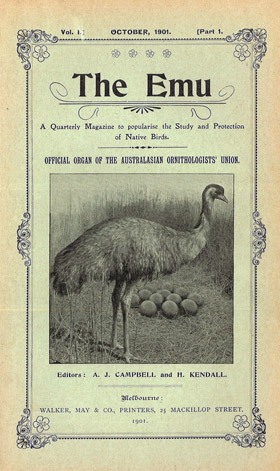 The "Emu" is a quarterly magazine started with the excellent intention of popularising, the study of the native birds, with the view of increasing the feeling in favor of their- protection. It is also to serve, as the official organ of the Australasian Ornithologists' Union, and Will provide a recognised means of Intercommunication between all interested in ornithology, whatever- their branch of that study may be, and afford all an opportunity of recording facts and valuable observations, and of giving publicity to these and their own deductions. The direction has been entrusted to the capable hands of Messrs. A. J. Campbell and H. Kendall.
The "Emu" is a quarterly magazine started with the excellent intention of popularising, the study of the native birds, with the view of increasing the feeling in favor of their- protection. It is also to serve, as the official organ of the Australasian Ornithologists' Union, and Will provide a recognised means of Intercommunication between all interested in ornithology, whatever- their branch of that study may be, and afford all an opportunity of recording facts and valuable observations, and of giving publicity to these and their own deductions. The direction has been entrusted to the capable hands of Messrs. A. J. Campbell and H. Kendall.
The opening number appropriately devotes considerable space to the peculiarly Australian bird whose name has been selected as the baptismal appellation of the new venture. Mr. D. Le Souef contributes an Interesting paper on Emu Feathers, with the view of presenting the difference in markings, and supplies some information concerning the habits of a member of the highest order of birds, both as regards classification and size.
The emu has a wide range, being found In every part of the continent except in the dense, scrub covered ranges on the northeastern coast, where the cassowary takes Its place. The bones have also been found in Tasmania, Kangaroo Island and on some of the islands of Bass's Straits. Among contributors to the magazine are Mr. Robert Hall, Mr.. Frank M. Little, Mr. H. Kendall, Mr. M'Ilwraith and others. Not only ornithologists but more ignorant members of the general public will appreciate the publication, which is issued by Walker, May and Co. LITERATURE. (1901, October 12). Leader (Melbourne, Vic. : 1862 - 1918), p. 30. Retrieved from http://nla.gov.au/nla.news-article196598484
Emu - Austral Ornithology is published quarterly by CSIRO Publishing, and is available to BirdLife Australia members at a discounted subscription rate. Access to the complete Emu archive, back to 1901, is available from the CSIRO website to members who choose an electronic subscription.
The Inaugural Australasian Ornithologists' Union Meeting was held in Adelaide on Friday November 1st, 1901
:
Messrs. A. J. Campbell, F.L.S., S. A. Mattingly, A. G. Campbell, and H. Kendall, of Victoria, arrived in Adelaide on Thursday morning to take part in the meeting held at the Federal Hall in connection with the Australasian Ornithologists' Union. PERSONAL. (1901, November 1). The Advertiser (Adelaide, SA : 1889 - 1931), p. 4. Retrieved from http://nla.gov.au/nla.news-article4890647
Photograph of A.J. Campbell, A.W. Milligan, Dudley Le Souef [picture]/ The Sears Studio - 1919, Image No.: PIC/7586/156, courtesy National Library of Australia
AUSTRALASIAN ORNITHOLOGISTS' UNION.
An important advancement in Australian scientific research was consummated on Friday evening in the Royal Society's rooms. North terrace, when the inaugural meeting of the Australasian Ornithologists' Union was held. Among those present were several gentlemen from other states who are interested in the study of our native birds. Just 12 months ago the preliminary meeting in connection with the union was held in Melbourne, when representatives from various states discussed the pros and cons of the subject, and it was thought that as most of the other nations of the world had their ornithologists' unions Australasia should have its union. There are now nearly 100 members, who hope to do valuable work to the country by studying the habits of native birds, and disseminating the knowledge they gain regarding their usefulness or otherwise. AUSTRALASIAN ORNITHOLOGISTS' UNION. (1901, November 2 - Saturday). The Register (Adelaide, SA : 1901 - 1929), p. 6. Retrieved from http://nla.gov.au/nla.news-article55671509
AUSTRALASIAN ORNITHOLOGIST'S' UNION.
A GENERAL MEETING will be held at 3 o'clock THIS EVENING in ROYAL SOCIETY'S ROOMS, INSTITUTE, NORTH-TERRACE. Papers will be read, including one by Mr. D. LE SOUEF, illustrated with Limelight Views. Visitors cordially invited. Advertising. (1901, November 2). The Advertiser (Adelaide, SA : 1889 - 1931), p. 2. Retrieved from http://nla.gov.au/nla.news-article4927540
'AN EVENING WITH AUSTRALIAN BIRDS.' LECTURE BY MR. DUDLEY LE SOUEF.
There was a large and representative gathering at the Federal Hall Grote street, on Thursday evening, when Mr. Dudley Le Souef CMZS of the Melbourne Zooilogical Gardens, delivered a highly interesting lecture entitled 'An evening with Australian birds.' The lecture was arranged by the various scientific societies of Adelaide, including the Ornithological Association, the Field Naturalists' Section of the Royal Society, the Birds' Protection Society, the Native Fauna and Flora Protection Committee, and the Photographic Society, to commemorate the inaugural meetings of the Australasian Ornithologists' Union.
Among those present were His Excellency Lord Tennyson, Lord Richard Nevill, Sir Samuel Way Barr., and Lady Way, and a number of legislators. The Minister of Education, Hon. T. H. Breaker presided. The chairman said it was a great pleasure to him to be with them on such an occasion, and to see so many people present. It was a good sign that so many Australians were awaking to the fact that it was necessary to take care of their feathered friends. The Education Department had for some time taken a deep interest in the matter, and had inserted in the 'Children’s Hour'' a series of articles encouraging the little ones to protect and love birds. He was pleased to notice that legislators were showing a friendly disposition to their harmless little friends, and approved of the work of instructing the children. His department had received a number of requests from the other states for literature on the subject. A motion had been tabled in the House of Assembly this year proposing to do away with the protection for the beautiful seagull, but happily the motion was withdrawn. The Government would at any rate hive been found opposing it. He was sure they all deeply appreciated the visit from 'their friends of the other states. It all augured well for the attainment of the object of the Ornithological Society.
Mr. Le Souef said it was his purpose to deal with various Australian birds, their nests, and customs, he was pleased to hear of the protection afforded to them in South Australia. It was a lesson to the other states which might well be copied. (Hear, hear.) The illustrations he would display would give them a better idea of the work the union was carrying on. The more they appreciated the birds they saw around them the better protection they would afford them, and the greater would 'be their endeavour to shield them from cruel treatment by the boys of the community. For nearly two hours the lecturer, -with the aid of a number of limelight views, explained with a vividness born of extended experience and close study the peculiarities of numerous Australian birds. The pictures realistically depicted the homes on land and in the treetops of our feathered friends, from the simple babbler to the majestic albatross nesting high up in the ...
monographs were shown of the open country in Queensland and the favourite spots for the concentration of bird life. Mr. Le Souef had a good word to say about the much-despised crow. Although at times cruel to lambs there were certain periods at the year when it did much good. People were inclined to think that all the large black birds they saw were crows, but in southern Australia and Tasmania it was a rare thing to find a crow. What is thought to be a crow was invariably a raven, and in Northern and Western Australia it was the other way about. A crow was distinguished by grey feathers under the wing. Two interesting pictures were shown of the homes of the bower birds, which the lecturer slid had a keen appreciation of cIeanliness. They were always cleaning up their premises-. They were constantly altering their household appointments, and were well up in the decorative art. Fresh, bright leaves were carried to the nest every morning and renewed at sunset.
Wherever Mallee country existed they would find the mallee fowl, which had its home in a large mound made almost entirely by one pair of birds. When rain fell the mound was … in, and became a miniature hill. The eggs of the mallee fowl were laid in a circle with mathematical accuracy. The habits of the Australian lyre bird were aptly described, and realistic slides showed the luxuriant nature of the country in which die variety dwells. The lyre bird, in Mr Le Souef's opinion, is the cleverest mimic in the world, as it can reproduce exactly any noise from the cry of a baby to the whistle of a steam-engine. The cuckoo was an interesting bird. The hen had an accommodating custom of laying her eggs in a neighbour's nest, and leaving them there to hatch along with those of her host. As soon as the latter's young crawled out of their shells they seemed to develop a strong instinct of antagonism to their foster brothers and sisters and after much pushing m the dark— for they were blind at this early age— generally forcibly dethroned the usurpers. A descriptive picture of a 'pelican's rookery' was exceedingly interesting, and the lecturer's anecdotes of the wayward habits of the young ones provoked roars of laughter.
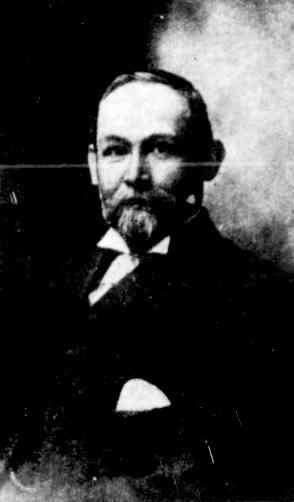 In the Macquarie Islands, he said, was to be found the largest rockery of royal penguins so far discovered in the world. On these islands the birds congregated during a certain period of the year to mope and change their plumage. They were invariably dotted over the ....and the rookery was sometimes half a mile wide by five miles in length. Farmers should recognise the uses of the ibises, and not destroy these splendid scavengers. In a swamp in the Riverina district there were about 200.000 of them, and the lowest estimate that could he made of the healthiness of their appetites was that they each consumed an average of 2.410 grasshoppers per day, making a total between them of 23tons of the insects. Some beautiful pictures of the shy albatross were shown, and the lecturer aptly described some of the seabirds' chief characteristic?. Excellent slides depicting the antics on the ocean of the white-breasted sea eagle were shown. Whenever ice albatross wished to rise in the air, explained the lecturer, it invariably flew against the wind, while the opposite practice is adopted when it felt the inclination to return to the surface of the water.
In the Macquarie Islands, he said, was to be found the largest rockery of royal penguins so far discovered in the world. On these islands the birds congregated during a certain period of the year to mope and change their plumage. They were invariably dotted over the ....and the rookery was sometimes half a mile wide by five miles in length. Farmers should recognise the uses of the ibises, and not destroy these splendid scavengers. In a swamp in the Riverina district there were about 200.000 of them, and the lowest estimate that could he made of the healthiness of their appetites was that they each consumed an average of 2.410 grasshoppers per day, making a total between them of 23tons of the insects. Some beautiful pictures of the shy albatross were shown, and the lecturer aptly described some of the seabirds' chief characteristic?. Excellent slides depicting the antics on the ocean of the white-breasted sea eagle were shown. Whenever ice albatross wished to rise in the air, explained the lecturer, it invariably flew against the wind, while the opposite practice is adopted when it felt the inclination to return to the surface of the water.Mr. Le Souef was heartily congratulated by Lord Tennyson and the Chief Justice for his instructive lecture. "AN EVENING WITH AUSTRALIAN BIRDS.". (1901, November 1). The Register (Adelaide, SA : 1901 - 1929), p. 6. Retrieved from http://nla.gov.au/nla.news-article55673819
Dudley, or William Henry Dudley Le Souef (1856-1923) a founding member and founding Secretary of the Royal Australasian Ornithologists Union (RAOU) in 1901, also served as President of that body 1907-1909. His egg collection was sold to Henry Luke White, becoming part of the H. L. White Collection which passed to the National Museum of Victoria. Mr. Le Souef was the son of Albert Alexander Cochrane Le Souef and brother of Ernest Albert Le Souef and Albert Sherbourne Le Souef, and these gentlemen, with their father, were those who were placed in charge of our some of our earliest zoos. (1)
Below: MR A. A. C. LE SOUEF, Director of Zoological and Acclimatisation Society’s Gardens, Melbourne, Victoria. Died May 8, 1902.
Above MR. W. H. DUDLEY LE SOUEF, Assistant Director Zoological and Acclimatisation Society, Melbourne. MR. W. H. DUDLEY LE SOUEF,. (1902, May 17). The Australasian (Melbourne, Vic. : 1864 - 1946), p. 30. Retrieved from http://nla.gov.au/nla.news-article139758569
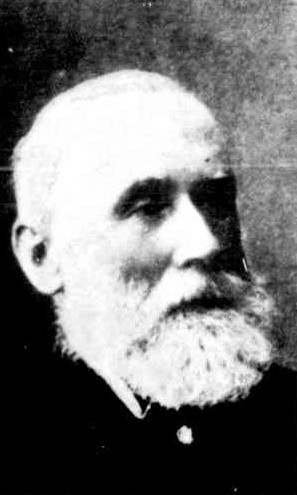 Albert Alexander Cochrane Le Souef (1828–1902) was an Australian zoologist and director of the Melbourne Zoo from 1882 to 1902. He was the father of the zoologists Ernest Albert Le Souef, Dudley Le Souef and Albert Sherbourne Le Souef. His full title was "Director of the Zoological and Acclimatisation Society of Victoria and was the son of William Le Souef of Kent, England, where he was born in 1828.
Albert Alexander Cochrane Le Souef (1828–1902) was an Australian zoologist and director of the Melbourne Zoo from 1882 to 1902. He was the father of the zoologists Ernest Albert Le Souef, Dudley Le Souef and Albert Sherbourne Le Souef. His full title was "Director of the Zoological and Acclimatisation Society of Victoria and was the son of William Le Souef of Kent, England, where he was born in 1828.He was of French descent, his forefathers being among the exiled Huguenots who sought refuge in England after the revocation of the Edict of Nantes by Louis XIV, in 1685. Leaving their native land for conscience sake, these staunch French Protestants scattered over several counties in England, Mr. Le Souef's ancestors settling in Kent. Though not a native of Victoria, Mr. Le Souef spent nearly the whole of his life in the State, having arrived with his parents in the year 1840, aboard the ship "Eagle".
Of his father, William's work while here, the same year a court case, when he was robbed of 1000 ounces of gold, appears in Victorian papers:
MELBOURNE GOLD ESCORT COMPANY.
Application for Shares having been made to the Board of Directors by parties residing at or near the various diggings, and also in the city of Melbourne, notice is hereby given that the shares applied for will be allotted. It is further notified that at a meeting of the Board or Directors, on the last day of August, at which ... of the new shareholders attended, it was decided that all …. and original shareholders, said measures were adopted which will enable the Company to be carried on with Increased efficiency. W. LESOUEF, Manager. Advertising. (
1853, August 25).
The Argus (Melbourne, Vic. : 1848 - 1957), p. 6. Retrieved from
http://nla.gov.au/nla.news-article4796112
Albert married in 1853 and was also made a District magistrate:
MARRIED. At St. Kilda, on the 9th inst., by the Rev. David Sedden, Albert Le Souef, Esq., to Caroline, fourth daughter of the late John Cotton, Esq., of Doogallook, Goulburn River. Family Notices. (
1853, August 10).
The Argus (Melbourne, Vic. : 1848 - 1957), p. 4. Retrieved from
http://nla.gov.au/nla.news-article4795550
NEW MAGISTRATES. - The following gentlemen were yesterday gazetted Magistrates of the Territory :William Acland, Douglas Anderson, Edward Thomas Barnard, St. Leger Barry, Charles C. Dowling, Richard Henry Horne, Herbert Taylor Middleton, Crawford Mollison, Charles Shuter, William Wilberforce, Clement Seonce, M.D., Albert Alexander Cochrane Le Souef, John Urquhart, Frederick Champion, and John Christie Aitken, Esquires. DOMESTIC INTELLIGENCE. (
1853, September 1).
The Argus(Melbourne, Vic. : 1848 - 1957), p. 5. Retrieved from
http://nla.gov.au/nla.news-article4796437
For nearly thirty years Albert was an active member of the Board for the Protection of the Aborigines, and was for several years its vice-chairman. In 1863 he was appointed Usher of the Black Rod to the Legislative Council, a position he held for thirty years:
THE GAZETTE.
The following announcements appeared in yesterday's Gazette:—
APPOINTMENTS. Mr. Albert Alexander Cochrane LeSouef to be the usher of the Legislative Council, in the room of Lieutenant-Colonel Farquharson, deceased. THE GAZETTE. (1863, August 19). The Argus (Melbourne, Vic. : 1848 - 1957), p. 5. Retrieved from http://nla.gov.au/nla.news-article6488311
As the duties attendant on that office only occupied about half the year, it was with the cordial assent of the then Chief Secretary, Sir James McCulloch, and the President and members of the Legislative Council, that Mr. Le Souef assumed, in 1870, the honorary secretaryship of the Acclimatisation Society. The name of the society was changed to that of the Zoological and Acclimatisation Society, and from this period the council determined to make their grounds a centre of instruction for the growing population of Melbourne.
On his appointment as hon. secretary in 1870, Mr. Le Souef took up his residence at the Gardens, Royal Park, and remained there until his death in 1902. (2)
His son Albert Sherbourne Le Souef (1877 - 1951) was another Australian zoologist, and first director of the Taronga Zoo from 1916 to 1939. He wrote The Wild Animals of Australasia (1926) with Henry Burrell. While Albert's son Ernest Albert Le Souef (13 September 1869 - 27 November 1937) also an Australian zoologist, was a director at the Perth Zoological Gardens from its foundation in 1898 until 1935. He retired to and died in Margaret River, Western Australia. (3)
Birds and the forming of these zoos were intertwined at the outset:
HOW WE GOT OUR ZOO.
By A. W. GREIG.
In the middle of the fifties, when the gold fever was subsiding, and some, at least, of the many thousands who had come to these shores in the hope of speedy wealth, were beginning to reconcile themselves to the idea of making a permanent home in Victoria, these new colonists commenced to turn their thoughts from the all- absorbing pursuit of gold to the idea of re- producing in the land of their exile some of the features of the social life of the old world from which they had come. Thus it was that the exhibition of a small collection of Australian birds and animals, somewhere in that region, of Bourke street afterwards graced by the Waxworks, about the middle of 1855, inspired the editor of the "Melbourne Magazine'' to suggest the conversion of the Carlton Gardens into an open-air menagerie, which would provide "a magnificent living school of comparative "anatomy" in close proximity to the nascent University. But it was not until two years later than any public movement took shape in this direction.
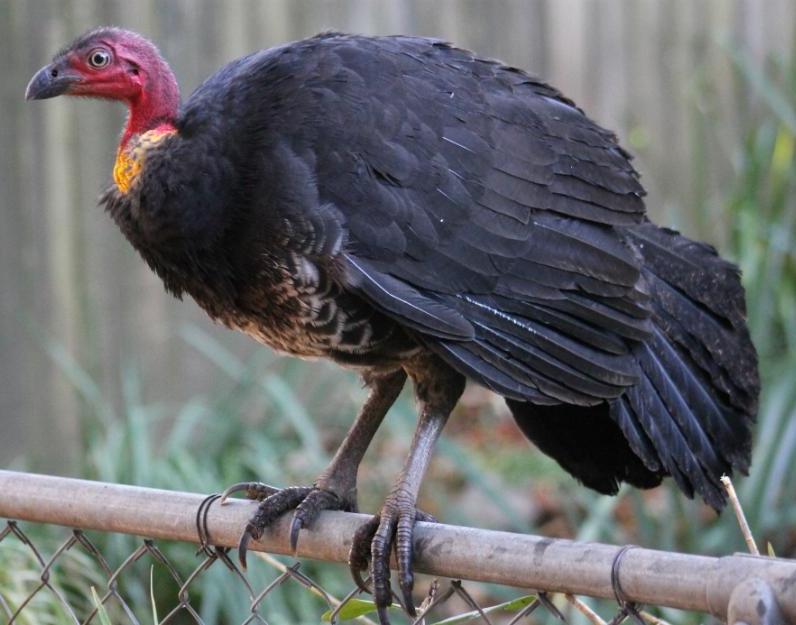 "On October 6, 1857, a meeting was held in St. Patrick's Hall, Bourke street west, for the purpose of forming an "Ornithological Society," which should encourage the improvement of breeds of poultry, and the importation of singing birds; but, at the instance of, Dr. Thomas Black, it was decided to extend the field of operations, and to establish a ''Zoological Society of Victoria," with the avowed object of forming a zoological collection. Mr. F. M. Selwyn was elected the first president, and Captain H. Butler Stoney, of the 40th Regiment, honorary secretary and treasurer, and the reservation of some 33 acres of the bush- clad Richmond Paddock, on a bend of the Yarra, opposite the Botanic Gardens, was obtained with little difficulty from the Government, as a site for a "zoo." A grant of £3,000 was also promised, and early in 1858 the work of clearing and levelling the ground was commenced. Several kangaroos and wallabies, two monkeys, three emus, and some other birds were presented to thesociety by Mr. Selwyn as a nucleus for its collection, and were temporarily housed at the Botanic Gardens; and in May, 1858, negotiations were entered into with one
"On October 6, 1857, a meeting was held in St. Patrick's Hall, Bourke street west, for the purpose of forming an "Ornithological Society," which should encourage the improvement of breeds of poultry, and the importation of singing birds; but, at the instance of, Dr. Thomas Black, it was decided to extend the field of operations, and to establish a ''Zoological Society of Victoria," with the avowed object of forming a zoological collection. Mr. F. M. Selwyn was elected the first president, and Captain H. Butler Stoney, of the 40th Regiment, honorary secretary and treasurer, and the reservation of some 33 acres of the bush- clad Richmond Paddock, on a bend of the Yarra, opposite the Botanic Gardens, was obtained with little difficulty from the Government, as a site for a "zoo." A grant of £3,000 was also promised, and early in 1858 the work of clearing and levelling the ground was commenced. Several kangaroos and wallabies, two monkeys, three emus, and some other birds were presented to thesociety by Mr. Selwyn as a nucleus for its collection, and were temporarily housed at the Botanic Gardens; and in May, 1858, negotiations were entered into with one Billings, proprietor of a travelling menagerie, for the acquisition of his animals, which he was to accompany to the "gardens" as "managing keeper," taking up his residence in a tent until the society could provide him with a more permanent habitation.
ZOOLOGICAL SOCIETY FORMED.
Notwithstanding the apparent smoothness of its early progress, none of the arrangements thus made by the society was destined to any permanent success. Captain Stoney was compelled by his commanding officer to relinquish his position as secretary, and the movement was thus deprived of its executive head, while, at the same time, the Government demanded that the expenditure of the money voted by Parliament should be under some measure of official control. The result was the formation of a "zoological committee," com-posed partly of members of the Zoological Society and partly of nominees of the Government, with Baron von Mueller as its secretary. A record of the agreement under which this was brought about forms the last entry in the minute-book of the society, which is preserved in the Public Library; and it seems evident that from this time onwards our first "Zoological Gardens" became merely an appanage of the Botanic Gardens, on the opposite bank of the river. "The Baron," in his report for 1858, deals very tersely with the matter, not even mentioning the "zoological committee."
"The aviary and menagerie," he says, "both established within the year, have . . . become very attractive to the public," and he adds that "the menagerie, established without special provision for conducting it, suffered from a scantiness of accommodation for the animals," which now included some English fallow deer and a flock of Angora goats. The fencing of the "Zoological Reserve" was completed early in 1859, and a gravelled walk was laid out therein; but although accommodation was provided, there for some of the animals, the "larger graminivorous quadrupeds” seem to have been kept on the south side of the river, where the ground was higher and healthier. Besides the fallow deer, the gardens now possessed a flock of "llama-alpacas," from the introduction of which great things were hoped at one period in our history. These animals formed portion of a flock which had been driven over-land from Peru to the Isthmus of Panama, and had thence been shipped to New York as a commercial speculation. Failing to find a purchaser there, they were sent onto England, where most of them were secured for Victoria by persons interested in the development of the colony's resources. Some further improvements were effected in the "northern ground" in 1860, and it is recorded that 79,000 visitors found their way there on Sundays during the year. The place was naturally swampy, and seems to have been devoted mainly to kangaroos and water-fowl.
EDWARD WILSON'S INITIATIVE.
Among the foremost of those interested in the experiments in acclimatisation which were being carried out under Baron von Mueller's supervision was Mr. Edward Wilson, one of the proprietors of "The Argus,” and it was largely due to his presence in England at the time that the first lot of alpacas was secured for Victoria. Mr. Wilson returned to Melbourne in February, 1861, full of enthusiasm on the subject, and within a fortnight of his landing he convened a meeting for the purpose of forming a new "acclimatisation society." The Governor, Sir Henry Barkly, presided, and Baron von Mueller reported that there were now 136 quadrupeds and 324 birds in the zoological collection. It was resolved that the existing zoological committee, with the addition of Mr. Wilson to their number, should form the committee of the new society. The wide expanse of the Royal Park was at once turned to as the most suitable place to form an acclimatization establishment, and a liberal reservation was granted there by the Government, together with a subsidy of £5,500, which enabled the committee to proceed with the erection of fencing and buildings forthwith. The transfer of the animals to these new quarters left the grounds on the banks of the Yarra available for experiments in tree-planting; but it is interesting to note that as late as 1867, when they were the scene of the famous "free banquet" during the visit of the Duke of Edinburgh, they were still known as the "Zoological Reserve." They subsequently became the "Friendly Societies Gardens," and are today known as the Amateur Sports Ground.
It is noteworthy that the Acclimatisation Society did not at first aim at the formation of a zoological collection, in the ordinary sense of the term, but devoted its attention mainly to such matters as the liberation of songbirds and the introduction of Angora goats and salmon and trout ova; but the protests of visitors in search of attractions seem to have turned the attention of the committee to the desirability of introducing more variety into their collection, and in 1872 the acquisition of a pair of African lions and a leopard was reported. In 1874 a bear-pit was constructed, and the gardens began to take on the aspect which has so long been familiar to us; and in the same year a camel, which as a six months' old youngster had been abandoned by the ill-fated Burke and Wills party on the northside of the Murray, and had run wild ever since, was captured and sent down to Royal Park.
Although my object has been merely to trace the origin and early development of our Zoological Gardens, it would not be fitting that I should close without some reference to the name of Le Souef, which has so long been associated with them. Mr. William Le Souef, who had occupied the position of protector of aborigines in the early days of the colony, was a member of the committee of the original Zoological Society of 1857, but does not appear to have taken any active part in its affairs. His son, Mr. Albert A. C. Le Souef, became connected with the Zoological Gardens in 1870, when the finances of the Acclimatisation Society were at a rather low ebb. Although already occupied by the duties of the office of usher of the Legislative Council, he undertook the responsibilities of the honorary secretaryship of the society, involving the supervision of the gardens themselves, his real functions in connection therewith being later recognised by the bestowal of the title of director: and in this way was commenced an association which only terminated on Mr. Le Souef's death in May, 1902. Mr. Dudley Le Souef, the present director, became his father's assistant in 1874, and other members of the family graduated at the Melbourne "Zoo" to take up similar positions in Sydney and Perth, Mr. A. S. Le Souef becoming director of the Sydney gardens in 1903. HOW WE GOT OUR ZOO. (1919, October 4). The Argus(Melbourne, Vic. : 1848 - 1957), p. 7. Retrieved from http://nla.gov.au/nla.news-article4678492
The Sydney Zoological Gardens were first situated in Moore Park and when they oputgrew this area
A few snippets from their times of the Acclimatisation Society and some of Dudley's, Mr. Le Seouf's eldest son, as well his hs transplanted to Sydney brother's efforts on bringing some poor animals a long way from their own homes:
Among the passengers by the mail steamer Rohilla, which sailed on Wednesday, was the assistant-secretary of the Zoological and Acclimatisation Society, Mr. Dudley Le Souef, who has been sent to Calcutta on a special mission to the Zoological Society of that city. He has taken with him a number of cases of Australian animals and birds, and he will bring back as many specimens of the fauna of India as he can procure. As the system of charging on certain days for admission to the Zoological-gardens at the Royal-park has now been conceded, the council of the society is determined to keep faith with the public, and extend its collection to the utmost of its means, Mr. Le Souef's mission is a step in that direction. It may be stated that the P. and O. Company, with its usual liberality, has taken the whole of the stock sent free of charge. TOWN NEWS. (1881, December 10). The Australasian(Melbourne, Vic. : 1864 - 1946), p. 19. Retrieved from http://nla.gov.au/nla.news-article138073771
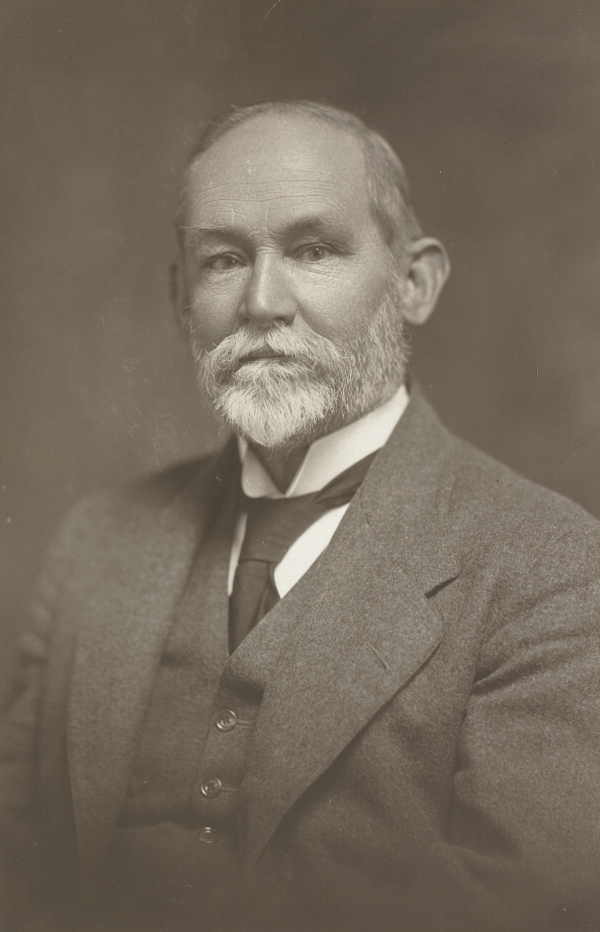 The council of the Zoological and Acclimatisation Society held a meeting on Monday afternoon, the 9th inst., at the office, G9 Temple-court. The following members were present :-Mr. C. M. Officer, M.L.A., president, Mr. Moule, Mr. Parchas, Mr. Ryan, and Mr. Venables, and the hon. secretary, Mr. Le Souef. It was reported that the gardens had proved a very great attraction to the public during the recent holidays, and had been very largely visited. The council of the society had long been anxious to place the Zoological-gardens on a sounder financial footing, and more assimilated to kindred institutions in Europe and America. To this end they had large posters printed and placed, at the garden gates, and in the grounds, during the recent holidays, explaining their wish to reduce the present charge of one shilling for adults and sixpence for children to half those rates on the days on which the society is permitted to charge, with special arrangements for schools, excepting on Mondays, on which day, in the interests of the subscribers, it is still proposed to charge the rate as at present.
The council of the Zoological and Acclimatisation Society held a meeting on Monday afternoon, the 9th inst., at the office, G9 Temple-court. The following members were present :-Mr. C. M. Officer, M.L.A., president, Mr. Moule, Mr. Parchas, Mr. Ryan, and Mr. Venables, and the hon. secretary, Mr. Le Souef. It was reported that the gardens had proved a very great attraction to the public during the recent holidays, and had been very largely visited. The council of the society had long been anxious to place the Zoological-gardens on a sounder financial footing, and more assimilated to kindred institutions in Europe and America. To this end they had large posters printed and placed, at the garden gates, and in the grounds, during the recent holidays, explaining their wish to reduce the present charge of one shilling for adults and sixpence for children to half those rates on the days on which the society is permitted to charge, with special arrangements for schools, excepting on Mondays, on which day, in the interests of the subscribers, it is still proposed to charge the rate as at present.
But if the council wish, if this concession is made on their part, to charge on Saturdays and holidays, Sundays being the only free day; and it is also intended to have a band in the gardens during summer on Saturday afternoons. The proposals of the council seem to have met with the approval of the public, as some 4,500 adults signified their assent by signing their names in books I kept for that purpose at the gates the persons signing being from all parts of the colony. Yesterday Mr. Officer, the president, and Mr. Le Souef, the hon. secretary of the society, waited on the Chief Secretary, and placed a copy of the council-proposals, and the books containing the signatures of the public in his hands.
Right: William Henry Dudley Le Souef. Photographic print : gelatin silver, toned ; 14.5 x 9.4 cm., on mount. Original owned and digitized by the State Library of Victoria (Accession No: H31890, Image No: a15641).
Mr. Grant stated that as such a strong expression of public opinion has been obtained, he would give the proposed plan a trial. The council expects that this will settle the vexed question as to the best means of raising funds, which has been such a hindrance to the progress of the society for years past. The council is doing all in its power to increase the attractions of the gardens. A number of new animals are expected to arrive from India in March next, the assistant secretary of the society, Mr. Dudley Le Souef, being now in Calcutta for the purpose of obtaining additions to the society's collection. Due notice of the proposed charge will be given through the press. TUESDAY, JANUARY 10, 1882. (1882, January 10). The Argus(Melbourne, Vic. : 1848 - 1957), p. 4. Retrieved from http://nla.gov.au/nla.news-article11528828
The assistant director of the Zoological and Acclimatisation Society, Mr., Dudley Souef arrived in Melbourne on the 7th inst.; from Singapore and Sumatra via Sydney. He has brought a number of valuable animals and birds, but, unfortunately, the two most valuable animals have died, namely a tapir and a rhinoceros. The former died at Port Darwin, and the latter at Sydney. Mr. Le Souef was unexpectedly detained several days in Sydney, having to change steamers, and the weather was cold and wet, the result being that the rhinoceros; -died from acute inflammation of the lungs and intestines, induced by the great change of temperature. The disappointment to Mr. Le Souef is very great, as he-only procured the animal after much delay, trouble, and expense, and he had hoped that in a few days he would have brought it safely to Melbourne. The loss to the society is considerable, as both the animals cost a good deal of money. The collection bought by Mr. Le Souef consists of a black leopard, two ouran-outans, two Moor Macaque monkeys, one Wah Wah monkey (a very rare and valuable variety); two sun bears, two jungle cats, two civet cats, one moose deer, 3 boa constrictors, (one nearly 20ft long), two Burmese pea-fowl, one remarkable crane, two fire-backed pheasants, and several other birds. The collection will be exhibited for the first time on the Prince of Wales' Birthday. TOWN NEWS. (1884, November 15). The Australasian(Melbourne, Vic. : 1864 - 1946), p. 27. Retrieved from http://nla.gov.au/nla.news-article137595761
The Sydney Zoological Gardens, situated at Moore Park and opened in December 1883, were the forerunner of what is now known at Taronga Zoo:
The Sydney Zoological Gardens.
THIS creditable resort is rapidly approaching a state of completion. The gardens are situated at tho corner of Moore Park, and are almost of triangular shape, being bounded on one side by Cleveland-street, on the opposite side by Moore Parkland at the base of the triangle by the Randwick-road. The grounds comprise altogether about 12 ½ acres, in one part of which stood tho old lagoon, which has now been converted into a miniature lake or pond, the banks of which are planted with shrubs and flowers, imparting to the scene a very nice appearance. Tho gardens are surrounded by a sheet iron fence 7ft high. There is an island in the centre of the pond covered with verdure, which forms a habitat and brooding place for various kinds of aquatic birds. The waters of the pond swarm with perch and carp. A perch about 18in long, and foal of roo was found a few days ago floating on the water dead. The gardens are still in their infancy, but, nevertheless, they are making rapid progress towards a more perfect state. It must be obvious that to bring an institution of this kind to a high degree of completeness is a work of time, and considering the progress already made, great praise is duo to tho president, A. T. Holroyd, Esq., the directors, and the indefatigable secretary of the society, Mr. Catlett.
Our artist has portrayed tho principal and most noteworthy subjects in the grounds separately.
No.1 is a portrait of the African baboon. We think this animal belongs to the genus Oynocephalus, or dogheaded, which receives its name from the resemblance between the face and muzzle to that of a dog. The baboons of this group are large, strong, and very agile. They dwell chiefly amongst rooks, and feed on eggs, insects, bulbous roots, grain, and scorpions. They nip off the tail of the scorpion very dexterously before swallowing tho body. The grey baboon, the mandril, and the drill belong to this group. In their native haunts they are ferocious, and any of them would be more than a match for an unarmed man.
No. 2 is a view of the aviaries, in which are confined pheasants, eagles, cockatoos, parrots, and many other species of birds.
No. 3 is a portrait of one of tho monkeys in the Society's exhibition.
No. 4 is a striking portrait of the caretaker's dwelling, the Society’s office being at present in apart of tho premises.
No. 5 shows a man washing Jumbo, the male elephant, with a hose. Jumbo has now got a mate, and if circumstances were more favourable she might trove to him a sweetheart also, and rejoice the heart of Paterfamilias with many juvenile Jumbos. A shed has been erected for both animals. Jessie, for such is the name assigned to the female elephant by" the powers that be," is said to be very mild tempered and obedient to command.
No. 6 is a representation of the pond.
No. 7 is a portrait of the sun, or Indian bear. It is a native of Sumatra and other islands in the Indian Archipelago.
No. 8 represents the bear pit in which two fine cinnamon bears, we believe from California, are confined. The gambols of these bears is one of the delights of the gardens.
No. 9 partly shows the bear pit, and also the shed first erected for the elephant Jumbo.
No. 10 represents the peocary, a very fine specimen of which is in the gardens. The peocaries are representatives of numerous species of tho Mastodons and gigantic Pachyderms which once roamed over the wilds of South America, and the remains of who are found in the fossil state. The peocaries belong to the suidos or pig family, but they differ from the common pig in having only four incisors in each jaw instead of six and only Biz molars on each side instead of seven. The canines or tusks are not nearly so long nor so curved as they are in the wild boar, or in tho Babyroussa of, Java and the Molucca islands.
No. 11 is a portrait of tho leopard, which is the most savage animal at present in 'tho gardens-ever ready to show its teeth, and also ready to use them if it only had a chance.
No. 12 explains itself, for the objects depicted in it are Australian and will be familiar to visitors.
A lion and tiger house are in course of erection, and will be utilised as cages for these beasts as soon as possible-. A monkey house is also being built, and will soon be finished. The collection also includes a fine carpet snake about 9ft long, and several smaller snakes, a puma or South American lion, a number of Tasmanian devils, a collection of monkeys, raccoons, native dogs, aquatic birds, land birds of various kinds, along with a miscellaneous collection of other zoological specimens. The gardens are open from 10 o'clock, a.m., to 5 o’clock, p.m., every week day, and on Saturdays and holidays a band enlivens the visitors by performing a choice programme of lively and popular music. The admission fee is 6d for adults, and 3d for children. The Sydney Zoological Gardens. (1883, December 29).Australian Town and Country Journal (Sydney, NSW : 1870 - 1907), p. 23. Retrieved from http://nla.gov.au/nla.news-article71006903
This trip in 1908 brought Albert Sherbourne Le Souef into contact with many zoos, one of which, at Hamburg, became the base model for cages without bars zoos here in Sydney:
The secretary of the New South Wales zoological Society, Mr. A. S. Le Souef, has arrived in Melbourne, en route for Cairo, Europe, and America, which he is visiting in the interests of the Sydney Zoological-gardens. NOTES AND NOTICES. (
1908, May 2). The Australasian(Melbourne, Vic. : 1864 - 1946), p. 39. Retrieved from
http://nla.gov.au/nla.news-article139213760
...At Hamburg there are two gardens, but the Hagenbeck Zoological collection is certainly the best. It is owned by Carl Hagenbeck, and was started four years ago. The object of the garden is to show animals in their natural state, by giving them every possible freedom. In one paddock of two or three acres there will be as many as a hundred specimens. An ostrich farm was started a short time ago and the birds arc kept out during winter, when snow is on the ground. They do not seem to take any harm. The carnivorous exhibit is the most frightful thing yet attempted in any zoological work. An artificial hill has been formed, and scattered about it are lions, tigers, mountain goats, sheep and birds on one side, and on the other are Polar bears, deer and other animals. They look perfectly natural, and the visitor fails to detect how they are separated. On this hill are immense spaces of 70ft by 40ft in extent, which are enclosed at the back and sides by walls of rock, and in front by a sunken moat 26 feet across.By this means the animals are prevented from escaping. At the base of the hill are seals and walruses, the latter seeing the only ones in captivity, and are worth about £3000. They cost £1 a day to feed. The hill is 150 feet high, and on the top and sides can be seen numerous goats and deer. There is a circus in connection with thee establishment. Herr Hagenbeck has succeeded in breeding a hybrid from a tiger and a lion, which is more like a lion, with faint stripes. The gardens at Amsterdam cover an area of 25 acres, and are situated well within the city boundaries, and only members are admitted, except on four days in each year. A family ticket costs £2 2s 'a year, a»d there are. 5W) members. Bands play during the day. The grounds possess the finest aquarium in Europe, built at a cost of £40,000. At Rotterdam the zoo and botanical gardens are combined and every species of Alpine plant is grown. The gardens at Antwerp are small, but have a large revenue. The concert-hall and museum was built at a cost of… The Animal Kingdom. (1908, November 21). Wagga Wagga Advertiser (NSW : 1875 - 1910), p. 5. Retrieved from http://nla.gov.au/nla.news-article145098388
Today our zoos are places sick animals are taken for treatment, not arenas where circuses may take place - although you still can see a few 'shows' at many. Zoos today have become 'arks' of kinds, and from some new babies may ensure we have some animals that are now threatened in their natural homes survive.
 They remain places where you may see our native birds and birds from other places.
They remain places where you may see our native birds and birds from other places.
In Pittwater we are lucky as we have access to waterbirds, birds that love trees, and birds, such as the Bush Turkey, who prefer a grounded habitat. We can hear them at dawn, and if close to a wetland, or surrounded by trees that mopokes and powerful owls frequent, we can hear them at night too!
They revel in our creeks, soar above as as raptors over the estuary, or squawk from eucalyptus branch. A perfect place to get involved with this year's Backyard Bird Count.
BirdLife Australia organises and promotes Bird Week with the goal of inspiring Australians to take action and get involved in bird conservation efforts. From October 20 - 26 2014 over 9,000 nature-loving Australians took part in the first ever Aussie Backyard Bird Count, giving us a fascinating snapshot of Australia’s birds, and revealing a national passion for Australian birds.
The birds didn’t shy away from the Count either, with more than 800,000 sightings of a huge range of species recorded over the week. The final result saw Rainbow Lorikeets, Noisy Miners, Australian Magpies, Sulphur-crested Cockatoos and Galahs as the most spotted birds, with more than 21,000 checklists submitted by backyard counters from across the country.
Rainbow Lorikeets were the top bird in New South Wales, Western Australia, South Australia, and Queensland, while the Australian Magpie led the flock in Victoria and the Australian Capital Territory. In the Northern Territory the Budgerigar was the most sighted, while the House Sparrow led the count in Tasmania.
Celebrate National Bird Week 2015 by taking part in the biggest citizen science project to hit Aussie shores! From 19-25 October, thousands of people from across the country are heading out into their backyards, local parks or favourite open spaces to take part in the second annual AUSSIE BACKYARD BIRD COUNT!
To get involved all you need is 20 minutes, your ‘green patch’ of choice, and some keen eyesight (or binoculars!) And it doesn’t matter if you’re a novice or an expert— Birdlife Australia will be there to help you out along the way. Simply record the birds you know and look up those you don’t on their Aussie Bird Count app (updated version available for download in September) or their website. You’ll instantly see live statistics and information on how many people are taking part near you and the number of birds and species counted across your neighbourhood and the whole of Australia!
Register now and Birdlife Australia keep you up to date with exciting Aussie Backyard Bird Count news!
Register at: aussiebirdcount.org.au
______________________________________________
References
1.Allan McEvey, 'Le Souef, Albert Alexander (1828–1902)', Australian Dictionary of Biography, National Centre of Biography, Australian National University, http://adb.anu.edu.au/biography/le-souef-albert-alexander-4013/text6361
2.A. Dunbavin Butcher, 'Le Souef, William Henry (1856–1923)', Australian Dictionary of Biography, National Centre of Biography, Australian National University, http://adb.anu.edu.au/biography/le-souef-william-henry-7176/text12401
3.A. Dunbavin Butcher, 'Le Souef, William Henry (1856–1923)', Australian Dictionary of Biography, National Centre of Biography, Australian National University, http://adb.anu.edu.au/biography/le-souef-william-henry-7176/text12401
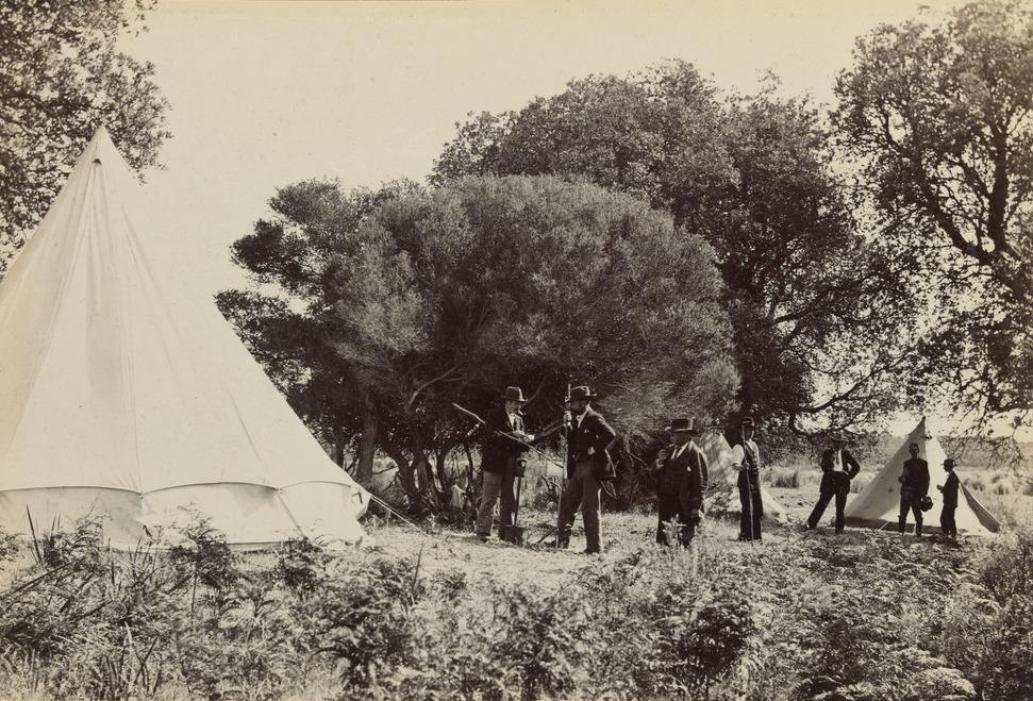
 BIRD DAY. FIRST CELEBRATION TO-MORROW. OBJECTS OF THE MOVEMENT.
BIRD DAY. FIRST CELEBRATION TO-MORROW. OBJECTS OF THE MOVEMENT.
 Although different methods of bird study have been adopted In different districts, there is one point upon which all members are agreed, and that Is the celebration of "Bird Day." There had been but one feeling about the matter-one of general enthusiasm; and the feeling has spread far beyond tho bounds of the Gould League itself. Bird Day has appealed to the general public, and magazines and newspapers have given It a great impetus by special articles and photographs.
Although different methods of bird study have been adopted In different districts, there is one point upon which all members are agreed, and that Is the celebration of "Bird Day." There had been but one feeling about the matter-one of general enthusiasm; and the feeling has spread far beyond tho bounds of the Gould League itself. Bird Day has appealed to the general public, and magazines and newspapers have given It a great impetus by special articles and photographs. A large and representative meeting of those interested in ornithology assembled at Miss Kissock's rooms, Collins street, Melbourne, on Wednesday evening, November 7, the occasion of a return complimentary dinner to Mr. Dudley Le Souef, assistant director of the Zoological gardens of Melbourne.
A large and representative meeting of those interested in ornithology assembled at Miss Kissock's rooms, Collins street, Melbourne, on Wednesday evening, November 7, the occasion of a return complimentary dinner to Mr. Dudley Le Souef, assistant director of the Zoological gardens of Melbourne.  The "Emu" is a quarterly magazine started with the excellent intention of popularising, the study of the native birds, with the view of increasing the feeling in favor of their- protection. It is also to serve, as the official organ of the Australasian Ornithologists' Union, and Will provide a recognised means of Intercommunication between all interested in ornithology, whatever- their branch of that study may be, and afford all an opportunity of recording facts and valuable observations, and of giving publicity to these and their own deductions. The direction has been entrusted to the capable hands of Messrs. A. J. Campbell and H. Kendall.
The "Emu" is a quarterly magazine started with the excellent intention of popularising, the study of the native birds, with the view of increasing the feeling in favor of their- protection. It is also to serve, as the official organ of the Australasian Ornithologists' Union, and Will provide a recognised means of Intercommunication between all interested in ornithology, whatever- their branch of that study may be, and afford all an opportunity of recording facts and valuable observations, and of giving publicity to these and their own deductions. The direction has been entrusted to the capable hands of Messrs. A. J. Campbell and H. Kendall. 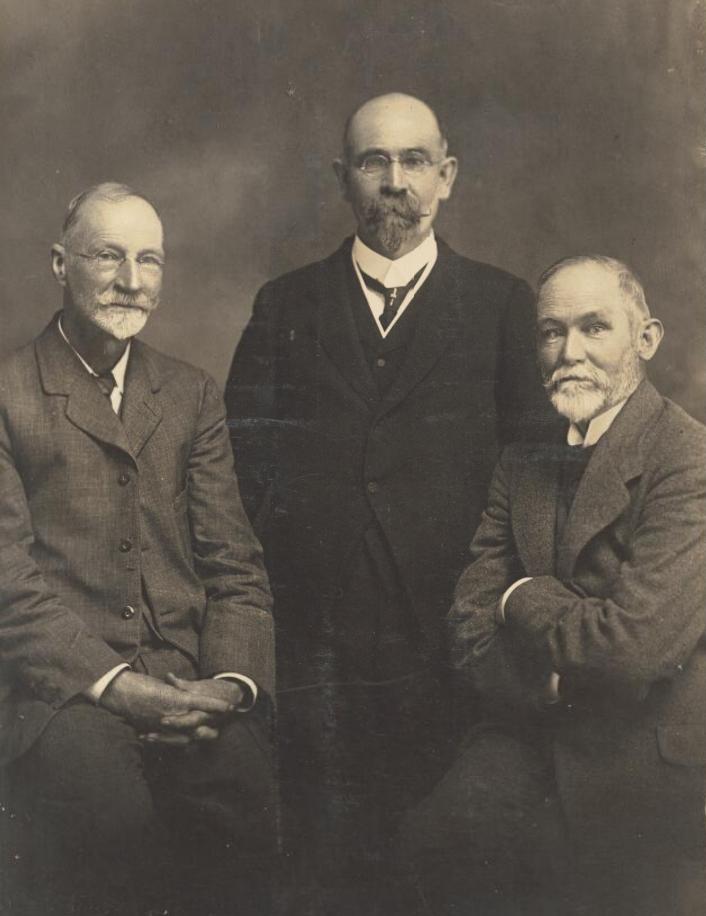
 In the Macquarie Islands, he said, was to be found the largest rockery of royal penguins so far discovered in the world. On these islands the birds congregated during a certain period of the year to mope and change their plumage. They were invariably dotted over the ....and the rookery was sometimes half a mile wide by five miles in length. Farmers should recognise the uses of the ibises, and not destroy these splendid scavengers. In a swamp in the Riverina district there were about 200.000 of them, and the lowest estimate that could he made of the healthiness of their appetites was that they each consumed an average of 2.410 grasshoppers per day, making a total between them of 23tons of the insects. Some beautiful pictures of the shy albatross were shown, and the lecturer aptly described some of the seabirds' chief characteristic?. Excellent slides depicting the antics on the ocean of the white-breasted sea eagle were shown. Whenever ice albatross wished to rise in the air, explained the lecturer, it invariably flew against the wind, while the opposite practice is adopted when it felt the inclination to return to the surface of the water.
In the Macquarie Islands, he said, was to be found the largest rockery of royal penguins so far discovered in the world. On these islands the birds congregated during a certain period of the year to mope and change their plumage. They were invariably dotted over the ....and the rookery was sometimes half a mile wide by five miles in length. Farmers should recognise the uses of the ibises, and not destroy these splendid scavengers. In a swamp in the Riverina district there were about 200.000 of them, and the lowest estimate that could he made of the healthiness of their appetites was that they each consumed an average of 2.410 grasshoppers per day, making a total between them of 23tons of the insects. Some beautiful pictures of the shy albatross were shown, and the lecturer aptly described some of the seabirds' chief characteristic?. Excellent slides depicting the antics on the ocean of the white-breasted sea eagle were shown. Whenever ice albatross wished to rise in the air, explained the lecturer, it invariably flew against the wind, while the opposite practice is adopted when it felt the inclination to return to the surface of the water. Albert Alexander Cochrane Le Souef (1828–1902) was an Australian zoologist and director of the Melbourne Zoo from 1882 to 1902. He was the father of the zoologists Ernest Albert Le Souef, Dudley Le Souef and Albert Sherbourne Le Souef. His full title was "Director of the Zoological and Acclimatisation Society of Victoria and was the son of William Le Souef of Kent, England, where he was born in 1828.
Albert Alexander Cochrane Le Souef (1828–1902) was an Australian zoologist and director of the Melbourne Zoo from 1882 to 1902. He was the father of the zoologists Ernest Albert Le Souef, Dudley Le Souef and Albert Sherbourne Le Souef. His full title was "Director of the Zoological and Acclimatisation Society of Victoria and was the son of William Le Souef of Kent, England, where he was born in 1828. "On October 6, 1857, a meeting was held in St. Patrick's Hall, Bourke street west, for the purpose of forming an "Ornithological Society," which should encourage the improvement of breeds of poultry, and the importation of singing birds; but, at the instance of, Dr. Thomas Black, it was decided to extend the field of operations, and to establish a ''Zoological Society of Victoria," with the avowed object of forming a zoological collection. Mr. F. M. Selwyn was elected the first president, and Captain H. Butler Stoney, of the 40th Regiment, honorary secretary and treasurer, and the reservation of some 33 acres of the bush- clad Richmond Paddock, on a bend of the Yarra, opposite the Botanic Gardens, was obtained with little difficulty from the Government, as a site for a "zoo." A grant of £3,000 was also promised, and early in 1858 the work of clearing and levelling the ground was commenced. Several kangaroos and wallabies, two monkeys, three emus, and some other birds were presented to thesociety by Mr. Selwyn as a nucleus for its collection, and were temporarily housed at the Botanic Gardens; and in May, 1858, negotiations were entered into with one
"On October 6, 1857, a meeting was held in St. Patrick's Hall, Bourke street west, for the purpose of forming an "Ornithological Society," which should encourage the improvement of breeds of poultry, and the importation of singing birds; but, at the instance of, Dr. Thomas Black, it was decided to extend the field of operations, and to establish a ''Zoological Society of Victoria," with the avowed object of forming a zoological collection. Mr. F. M. Selwyn was elected the first president, and Captain H. Butler Stoney, of the 40th Regiment, honorary secretary and treasurer, and the reservation of some 33 acres of the bush- clad Richmond Paddock, on a bend of the Yarra, opposite the Botanic Gardens, was obtained with little difficulty from the Government, as a site for a "zoo." A grant of £3,000 was also promised, and early in 1858 the work of clearing and levelling the ground was commenced. Several kangaroos and wallabies, two monkeys, three emus, and some other birds were presented to thesociety by Mr. Selwyn as a nucleus for its collection, and were temporarily housed at the Botanic Gardens; and in May, 1858, negotiations were entered into with one  The council of the Zoological and Acclimatisation Society held a meeting on Monday afternoon, the 9th inst., at the office, G9 Temple-court. The following members were present :-Mr. C. M. Officer, M.L.A., president, Mr. Moule, Mr. Parchas, Mr. Ryan, and Mr. Venables, and the hon. secretary, Mr. Le Souef. It was reported that the gardens had proved a very great attraction to the public during the recent holidays, and had been very largely visited. The council of the society had long been anxious to place the Zoological-gardens on a sounder financial footing, and more assimilated to kindred institutions in Europe and America. To this end they had large posters printed and placed, at the garden gates, and in the grounds, during the recent holidays, explaining their wish to reduce the present charge of one shilling for adults and sixpence for children to half those rates on the days on which the society is permitted to charge, with special arrangements for schools, excepting on Mondays, on which day, in the interests of the subscribers, it is still proposed to charge the rate as at present.
The council of the Zoological and Acclimatisation Society held a meeting on Monday afternoon, the 9th inst., at the office, G9 Temple-court. The following members were present :-Mr. C. M. Officer, M.L.A., president, Mr. Moule, Mr. Parchas, Mr. Ryan, and Mr. Venables, and the hon. secretary, Mr. Le Souef. It was reported that the gardens had proved a very great attraction to the public during the recent holidays, and had been very largely visited. The council of the society had long been anxious to place the Zoological-gardens on a sounder financial footing, and more assimilated to kindred institutions in Europe and America. To this end they had large posters printed and placed, at the garden gates, and in the grounds, during the recent holidays, explaining their wish to reduce the present charge of one shilling for adults and sixpence for children to half those rates on the days on which the society is permitted to charge, with special arrangements for schools, excepting on Mondays, on which day, in the interests of the subscribers, it is still proposed to charge the rate as at present.  They remain places where you may see our native birds and birds from other places.
They remain places where you may see our native birds and birds from other places.